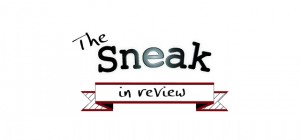 It’s all-native-all-the-time in the ad biz nowadays, with everyone – marketers and news media alike – jumping on the ads-in-sheep’s-clothing bandwagon.
It’s all-native-all-the-time in the ad biz nowadays, with everyone – marketers and news media alike – jumping on the ads-in-sheep’s-clothing bandwagon.
Exhibit Umpteen (via MediaPost’s Online Publishing Insider):
2013 will be remembered as the year “native advertising” transitioned from a buzzword to a full-fledged category. As with any newborn, there will certainly be some wobbles and falls along the way, as the native category quickly goes from crawl to walk to run, but what’s clear is that native will grow and mature into an important part of the digital advertising ecosystem.
All of this is ultimately a net positive for consumers . . .
Yeah yeah – as long as it’s transparent and substitutes engagement for interruption and blah blah blah. The piece also promises that “confusion will subside” about the sneak adtacks and that “Brand will be the new buzzword” – which, of course, will only increase confusion.
Which, of course, is how stealth marketers like it.
Next playah in the brand storytelling set: Venerable British newspaper The Guardian (via Adweek).
The Guardian’s Unusual Take on Native Ads
Kicking off campaign with Unilever
The Guardian is jumping on the native ad trend—but, in character for the British newspaper, it’s doing so in its own way. Today it announced the first client,
Unilever, of Guardian Labs, its in-house branded content unit. For the year-long, seven-figure campaign starting in March, the Guardian will create content to help connect Unilever with sustainability issues. The campaign will initially run in the U.K., although it’s not ruling out migrating it to the U.S.
Native advertising has come to encompass a wide range of ad units and programs, all with the intent of passing, at least initially, as editorial content. David Pemsel, deputy CEO of Guardian News Media, the newspaper’s parent, eschews that term, though—the Guardian doesn’t want to get lumped in with the many native ads that just mimic the look and feel of the host publisher. “What the Guardian is doing is really strategic,” he said.
Right!
Bespoke strategies!
Guardian Labs . . . wants readers to participate—it’s building its work around the newspaper’s belief in open journalism.
Right!
Bespoke solutions!
Many news outlets have kept their journalists far away from the native content creation process. However, Guardian Labs will maintain no such separation.
Brilliant!
But . . .
Depressing!
Finally, today marks the debut of Chipotle’s Farmed and Dangerous, a branded content series that will air weekly on Hulu for the next month.
Via The Motley Fool’s Rick Munarriz on Daily Finance:
Chipotle Adds Yuks to the Menu
Chipotle Mexican Grill isn’t the first name you think of when talking situation comedies, but the fast-growing burrito roller is about to go Hollywood. The
1,553-unit fast-casual chain is bankrolling Farmed and Dangerous, a dark industrial comedy series about the evils of extreme animal-raising practices.
There are four episodes in the initial season, detailing the shenanigans at a fictional industrial giant called Animoil that introduces a petroleum-based animal feed called PetroPellet. The downside to the feed is that cows sometimes blow up.
Sort of the way the news/entertainment divide is blowing up, yeah?
Anyway, here’s the first episode:
File under: Alarmed and Dangerous.
John R. Carroll is media analyst for NPR's Here & Now and senior news analyst for WBUR in Boston. He also writes at Campaign Outsider and It's Good to Live in a Two-Daily Town.
John R. Carroll has 305 post(s) on Sneak Adtack
1 comment
The Sneak in Review: The Future of Native Advertising Is . . . | Campaign Outsider says:
Feb 17, 2014
[…] the rest (and see Chipotle’s premiere of Farmed and Dangerous) at Sneak Adtack. Share this:ShareLike this:Like […]